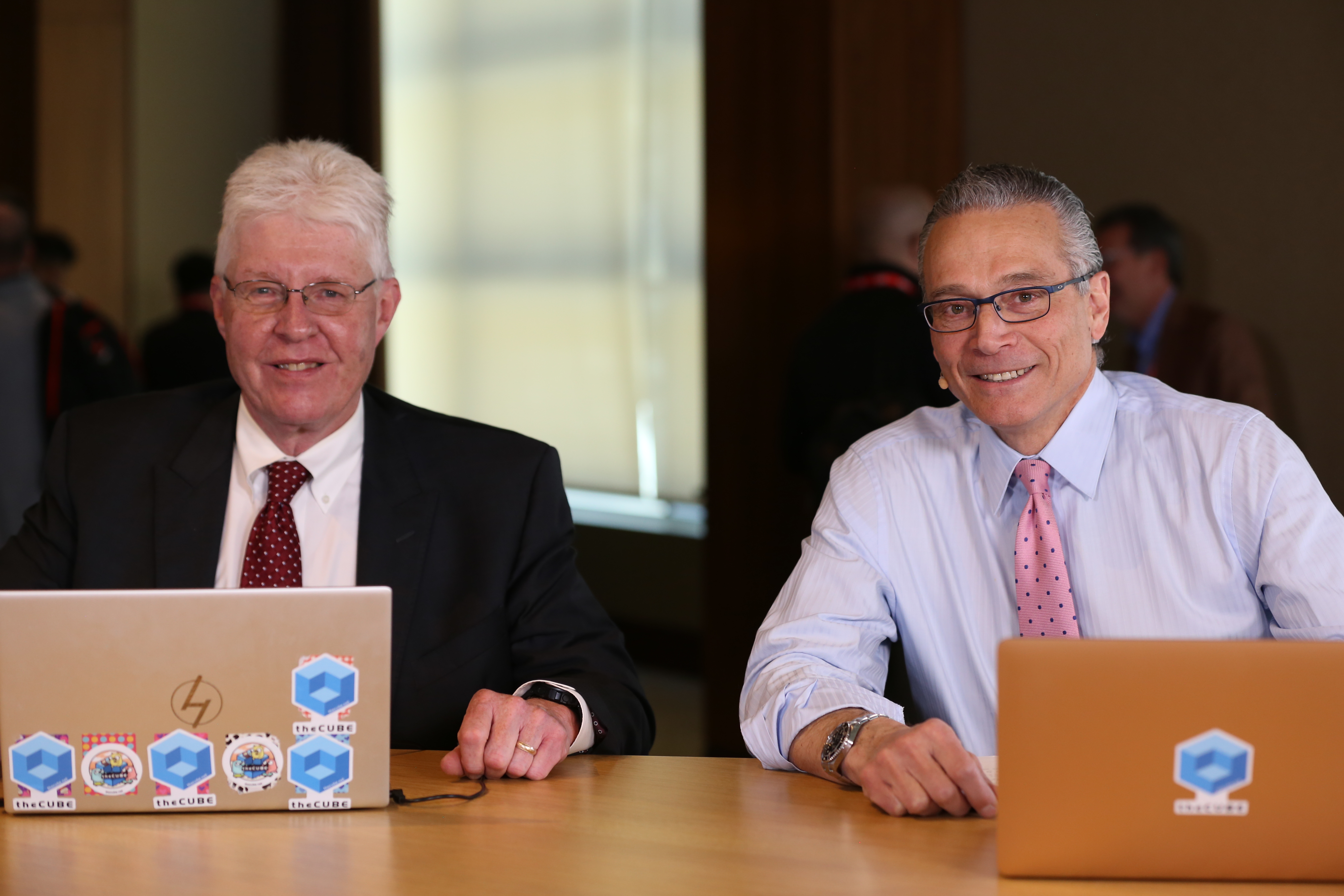 INFRA
INFRA
 INFRA
INFRA
 INFRA
INFRA
Red Hat Summit returned to Boston this week, with announcements of new hardware collaborations that drive cloud-native development ceaselessly forward while still allowing for developers to easily integrate existing setups into cloud hybrid applications.
“You’re gonna hear a lot of talk this week about Red Hat’s cloud services portfolio, packaging Red Hat services as managed services,” said theCUBE’s industry analyst Dave Vellante. “That’s a much more popular delivery mechanism with clients because they’re trying to make it easy.”
Vellante was joined by industry analyst Paul Gillin during the Red Hat Summit event, an exclusive broadcast on theCUBE, SiliconANGLE Media’s livestreaming studio. Wrapping up the first day of the event, they discussed the keynote speech and advancements in hardware in the coming years. (* Disclosure below.)
Despite IBM’s history of “bluewashing” acquisitions, Big Blue has uncharacteristically been almost free from mention during Red Hat Summit’s keynote address — even though IBM Think is happening simultaneously.
“IBM was not mentioned once, and the logo only appeared once on the screen in fact, so this is very much Red Hat being Red Hat, not being a subsidiary,” Vellante said. “I think that certainly IBM’s done a good job of weaving the brand separately.”
This reminds Vellante of when EMC Inc. owned VMware Inc. but didn’t want it publicized. One potential reason is that Red Hat is more influential to IBM than the parent company wants to admit.
“It’s very clear that Red Hat is the growth engine within IBM,” Gillin said. “I’d say it’s a bit of the tail wagging the dog right now, where Red Hat really is dictating where IBM goes with its hybrid cloud strategy, which is the foundation not only of its technology portfolio, but of its consulting business. Red Hat is really in the driver’s seat of hybrid cloud, and that’s the future for IBM.”
The release of RHEL 9 continues to build on Red Hat’s hardware collaborations with both Intel Corp. and Nvidia Corp., with hardware likely to “become one of the most important factors” in the next couple of years, according to Red Hat Chief Executive Paul Cormier’s keynote during the event, Vellante reported.
Both Vellante and Gillin agreed that a “hardware renaissance” is building as processing becomes decentralized, moving to smaller discrete processors on the edge with the CPU serving as more of a “traffic cop.” The creation of 100-core CPUs is a precursor to the “200- to 300-core CPUs we may see in the next couple of years,” Gillin said.
Here’s the complete video discussion, part of SiliconANGLE’s and theCUBE’s coverage of the Red Hat Summit event:
(* Disclosure: TheCUBE is a paid media partner for Red Hat Summit. Neither Red Hat, the sponsor for theCUBE’s event coverage, nor other sponsors have editorial control over content on theCUBE or SiliconANGLE.)
Support our mission to keep content open and free by engaging with theCUBE community. Join theCUBE’s Alumni Trust Network, where technology leaders connect, share intelligence and create opportunities.
Founded by tech visionaries John Furrier and Dave Vellante, SiliconANGLE Media has built a dynamic ecosystem of industry-leading digital media brands that reach 15+ million elite tech professionals. Our new proprietary theCUBE AI Video Cloud is breaking ground in audience interaction, leveraging theCUBEai.com neural network to help technology companies make data-driven decisions and stay at the forefront of industry conversations.